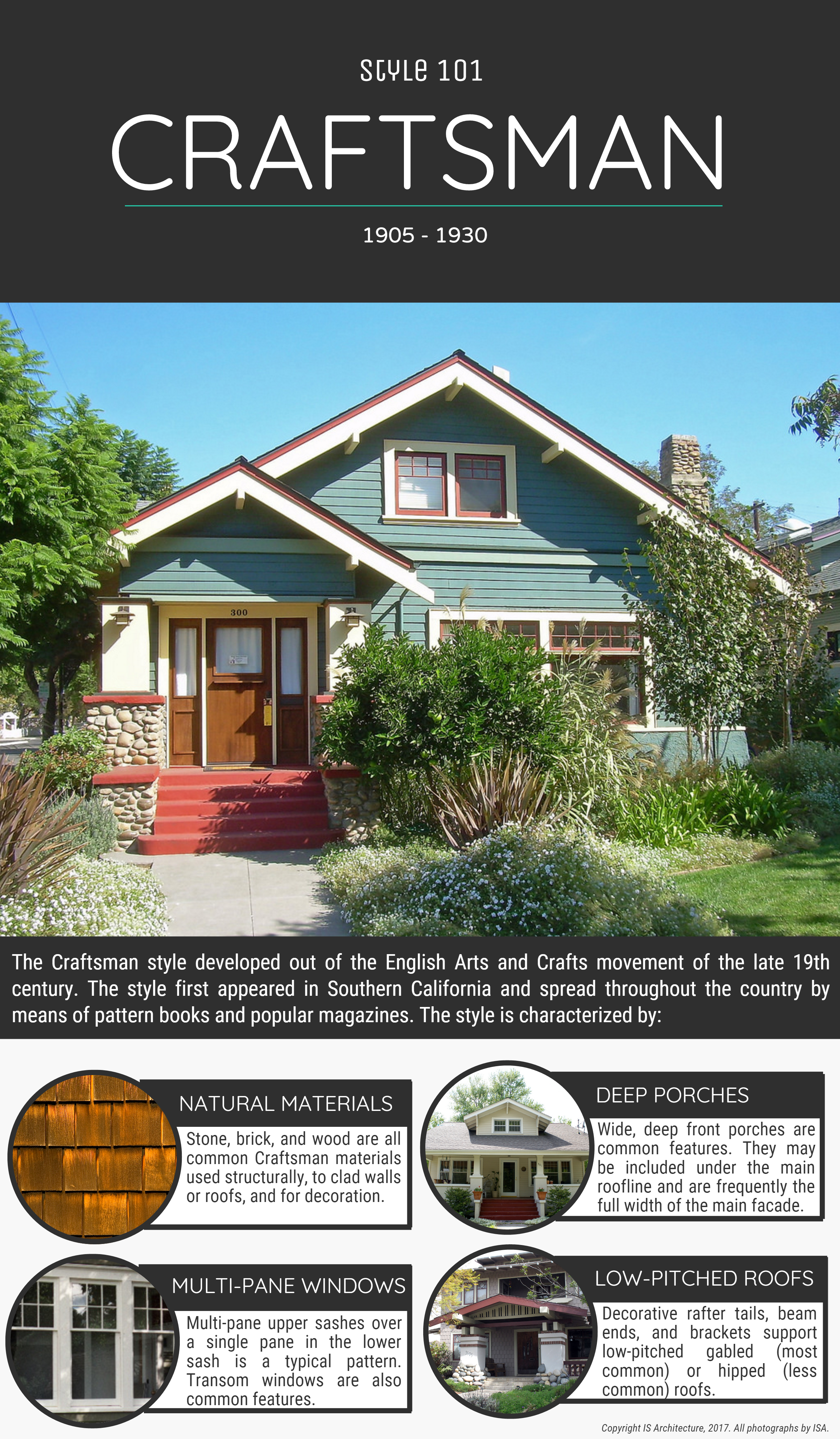Style 101: Craftsman
The Craftsman style developed out of the English Arts & Crafts movement of the late 19th century. In 1862, a British artist and medievalist named William Morris took issue with the loss of craftsmanship and individual design that had resulted from the Industrial Revolution. In response, he founded the design firm Morris, Marshall, Faulkner & Co. to bring what he saw as individuality and quality back to design. Morris’ work was popular, but only the financially well-off could afford his designs — everybody else still relied on the cheaper, quicker, mass-production materials that the Industrial Revolution produced and against which Morris advocated. Nonetheless, Morris’ thoughts were influential on the fields of architecture and the decorative arts. By 1888, the movement had taken its name from the Arts and Crafts Exhibition Society, which advocated for the exhibition of decorative arts (such as stained glass, furniture and accessory furnishings, rugs, embroidery, book illustration, basketry, ceramic pottery, etc.) alongside fine arts (painting, drawing, sculpture, architecture, etc.).
It did not take long for Arts & Crafts ideas to flow into the realm of fine arts, specifically into works of architecture. The Arts & Crafts ideals of functionality and individual design translated well into a new architectural style that strove to separate itself from more traditional styles that had dominated the field to this point. Arts & Crafts (or, more commonly, Craftsman) architecture was built around the concept that design should be dictated by function. Additionally, site-specific design that respected the existing landscape was emphasized. These concepts typically resulted in smaller buildings with just enough space to serve the needs of its inhabitants. Since a functional floorplan and site-specific design was prioritized over the exterior plan of the home, facades were often asymmetrical. Natural materials such as wood, brick, and stone further integrated a building with its site. In accordance with Morris’ principles, local materials and the work of skilled craftsmen were highly valued.
The Craftsman style first appeared in America in the first decade of the 20th century. Charles and Henry Green, home and furniture designers working in Pasadena and Los Angeles, California, helped to refine the style for the American market. The style soon spread across the country with the help of popular magazines and the publication of pattern books. It became one of the most predominant styles of the early 20th century and new construction in the style is still ongoing. The style is common in San Diego, appearing in different shapes and sizes in nearly every neighborhood.
There are over 600 designated Craftsman historic resources in San Diego. Could yours be next? Check out our handy infographic below to see if your home features the defining characteristics of the Craftsman style!


